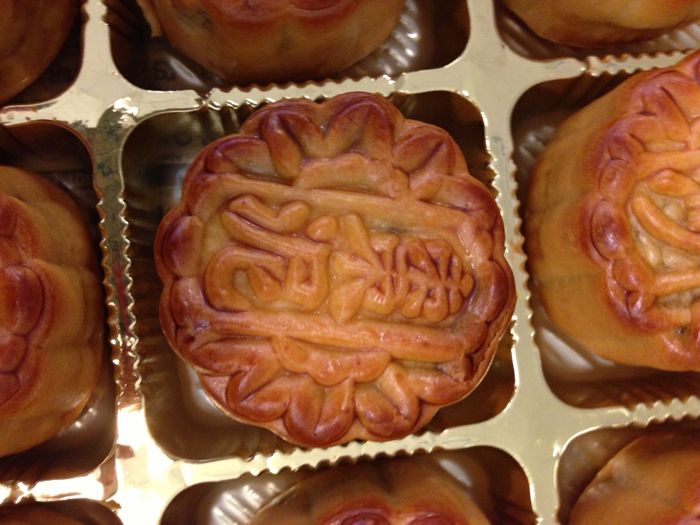
China Sours on Waste from Sweet Mooncakes (Op-Ed)

Christine Xu is a program assistant in the China Program and Energy & Transportation Program for the Natural Resources Defense Council (NRDC). This Op-Ed is adapted from one that appeared on the NRDC blog Switchboard. Xu contributed this article to LiveScience's Expert Voices: Op-Ed & Insights.
Today, I received a package in the office. When I saw where it was from, I half-jogged back to my desk so I could tear it apart and begin the once-in-a-year chance to eat one of my favorite treats: mooncake.
Mooncake is a traditional Chinese pastry made especially for celebrating the Moon Festival (which this year falls on Sept. 19). I live in Washington, D.C., and its Chinatown barely qualifies. When I moved here three years ago, I called my parents and used the daintiest voice I could muster to tell them that, sadly, I could not celebrate the Moon Festival anymore, because mooncakes were nowhere to be found in D.C. They felt so sorry for me that they mailed a box from our favorite Chinese bakery near our home in the San Francisco Bay Area. This year, they mailed two. Bless their hearts.
Typically, mooncakes have a rich, thick filling made from red beans or lotus-seed paste, surrounded by a thin layer of golden crust. Whereas in northern China (where I'm from) red bean- and jujube-filled mooncakes are the norm, savory (pork or egg) mooncakes are the custom in southern China . Either way, they're quintessential for family gatherings during the holiday, and nowadays also for businessmen and families to present to clients, friends and relatives as gifts.
Sharing mooncakes is an established cultural tradition of China's, where food is highly regarded and our days are planned around meals. But in recent years, this tradition has become a headache for environmentalists and political leaders alike: Excessive packaging and food waste associated with mooncakes have reached new heights.
Certain luxury mooncake packages come in boxes decorated with silk, beautiful paintings and sometimes even real gold, costing thousands of yuan. The boxes usually hold between four and eight mooncakes, all individually wrapped, then boxed and wrapped some more. The packaging has become so extravagant that people often re-gift the mooncakes — in other words, it is not the mooncakes people are gifting anymore, but the lavish packaging.

The profit rate of normally packaged mooncakes is approximately 15 to 30 percent, while the profit rate of luxuriously packaged mooncakes is more than 100 percent. Every year, more than 10 million mooncake boxes are manufactured and 2.5 billion yuan spent on packaging.
Sign up for the Live Science daily newsletter now
Get the world’s most fascinating discoveries delivered straight to your inbox.
Most consumers find luxurious mooncake packaging expensive, wasteful and unnecessary, but still feel obliged to gift them to preserve "face" (面子, a Chinese concept — to look generous.)
In fact, excessive packaging (see individually wrapped dates here) has become the norm for any gift item, particularly tea, alcohol, health foods and festival-related foods. Altogether, the total value of packaging exceeds 400 billion yuan a year, and accounts for more than 50 percent of municipal solid waste.
To address the issue, China's Clean Production Promotion Law was amended last year to strengthen existing regulations on excessive packaging. The law requires companies to ensure that the "material, arrangement and cost" of packaging are in line with the value of the product, mandating specifically that packaging be no more than three layers and cannot exceed 20 percent of the value of the product. However, it is unclear whether the law has had any true impact — the Quality Certification Center recently inspected major supermarkets in Shanghai and found 60 to 70 percent of health products to still have excessive packaging.
On top of that, mooncakes also contribute to a tremendous amount of food waste. Families often find themselves receiving mooncakes from almost every acquaintance, resulting in a large amount that goes uneaten. Because there is far more supply than demand in the market, an estimated 2 million mooncakes were thrown away last year in Hong Kong alone. Similar numbers were also reported in mainland China.
In response, the Hong Kong Environmental Protection Department launched a Food Wise campaign urging citizens to reduce food waste and encouraging them to donate excess mooncakes and mooncake boxes.
Additionally, Chinese President Xi Jinping's anti-corruption measures specifically prohibit companies from buying high-end mooncakes in bulk using public funds, and the changes have made a noticeable dent in mooncake sales this year. Last year, some 280,000 tons of mooncakes worth 16 billion yuan ($2.6 billion) were sold in China. This year, sale of luxury mooncakes has dropped by almost 12 percent.
I have blogged about food waste before, and a new report issued by the Food and Agriculture Organization of the United Nations is another reminder of the enormous toll food waste has on global climate, water, land use and economy, when one-third of the food produced worldwide is wasted each year. Let's not exacerbate the issue with wasted mooncakes. There are plenty of things we can do to make sure that mooncakes do not spoil the holiday cheer.
Xu's most recent Op-Ed was "Shark-Fin Soup Losing its Status as Shark Populations Decline." This piece is adapted from the post"The Not-So-Appetizing Side of Mooncakes,"which appeared on the NRDC blog Switchboard with additional links and references to data. The views expressed are those of the author and do not necessarily reflect the views of the publisher. This article was originally published on LiveScience.












